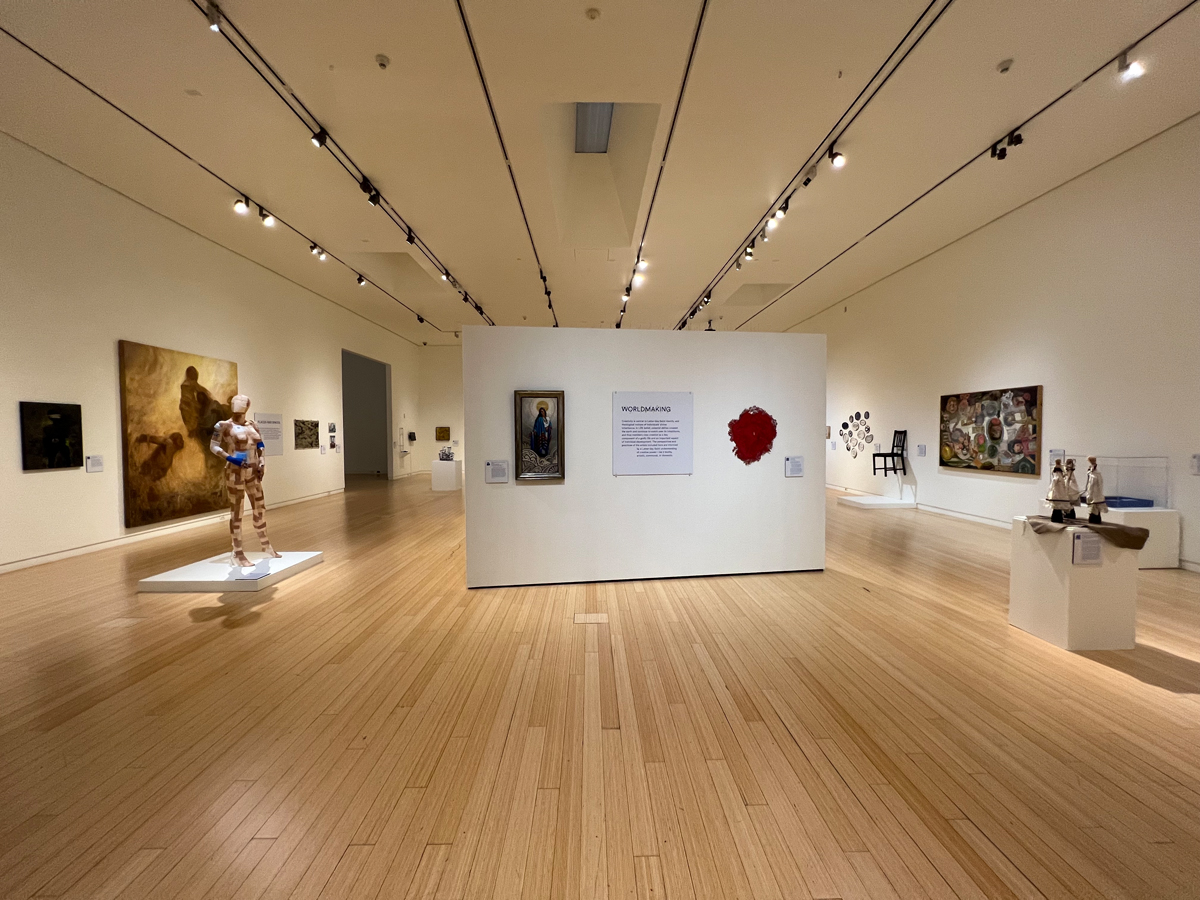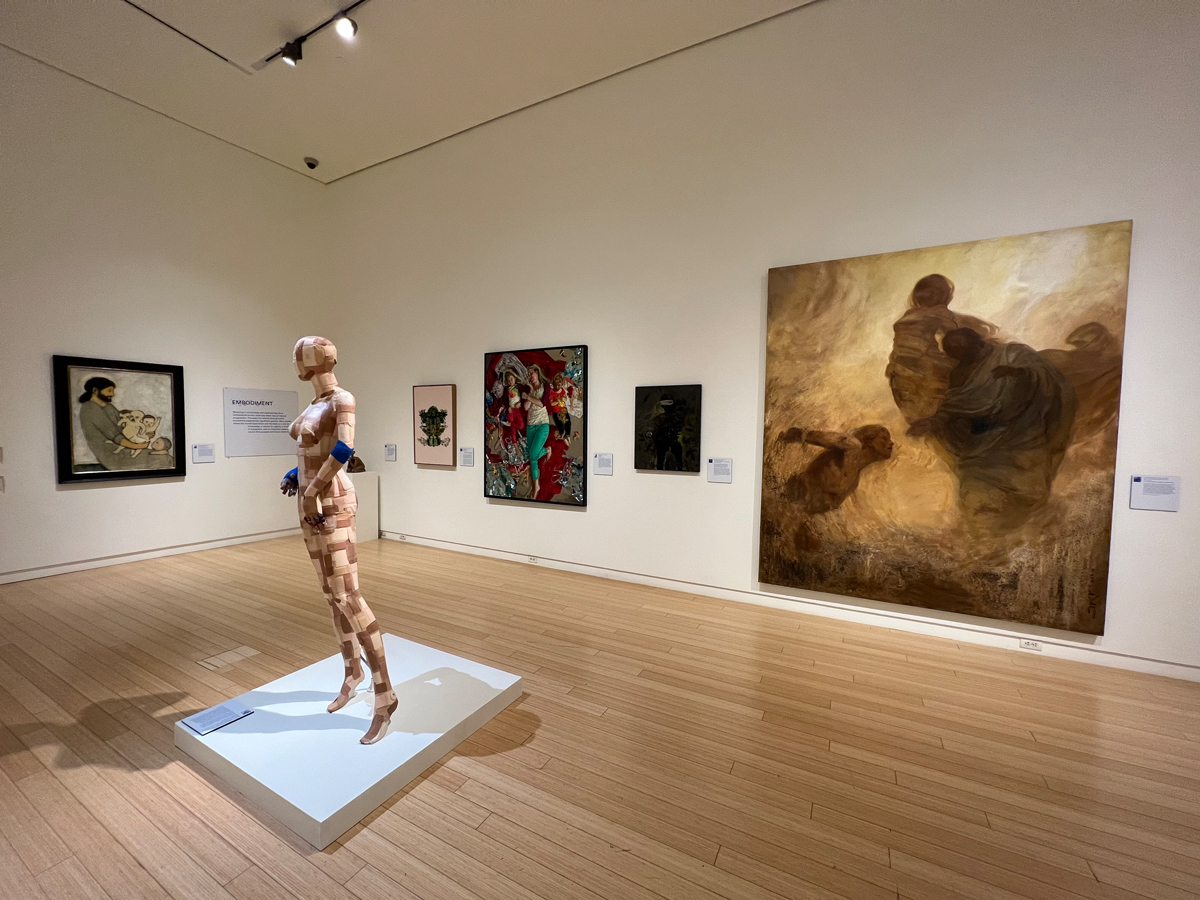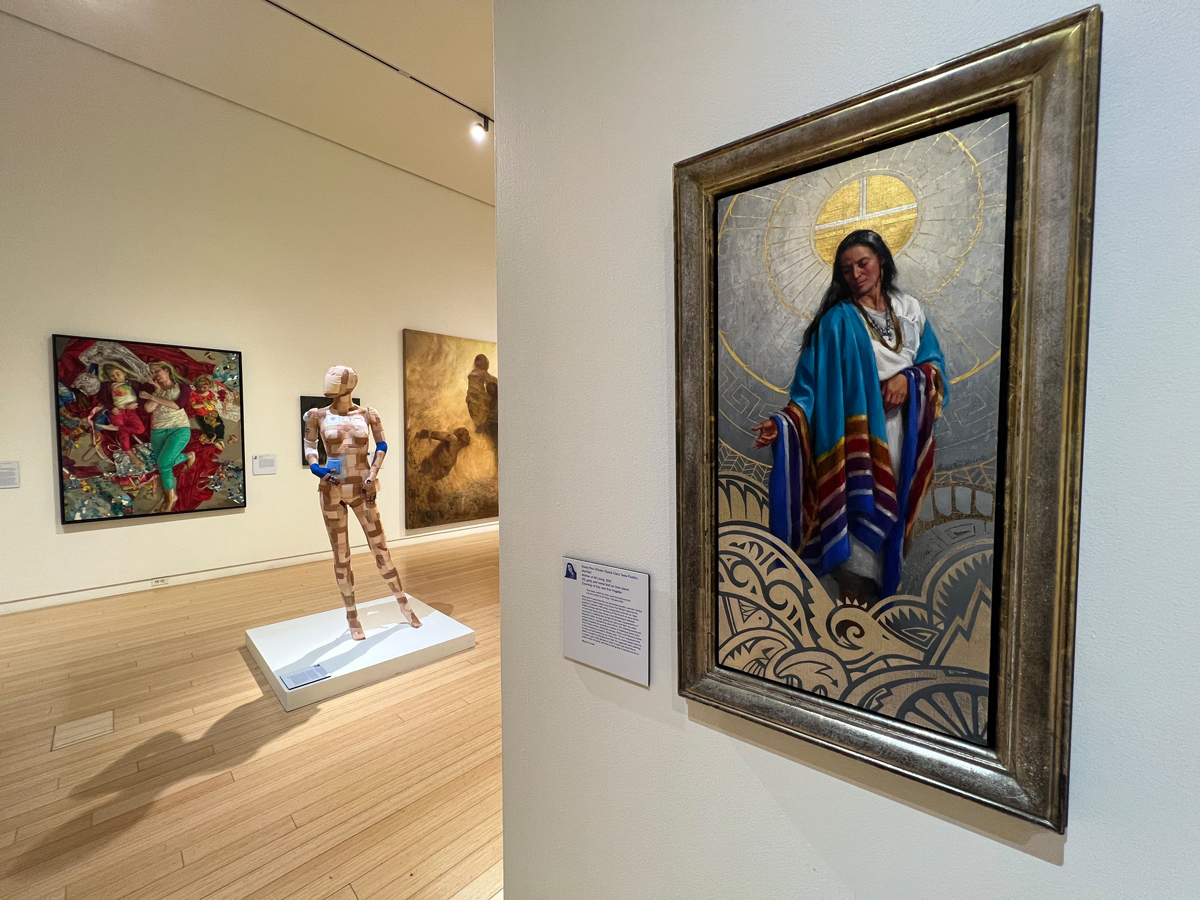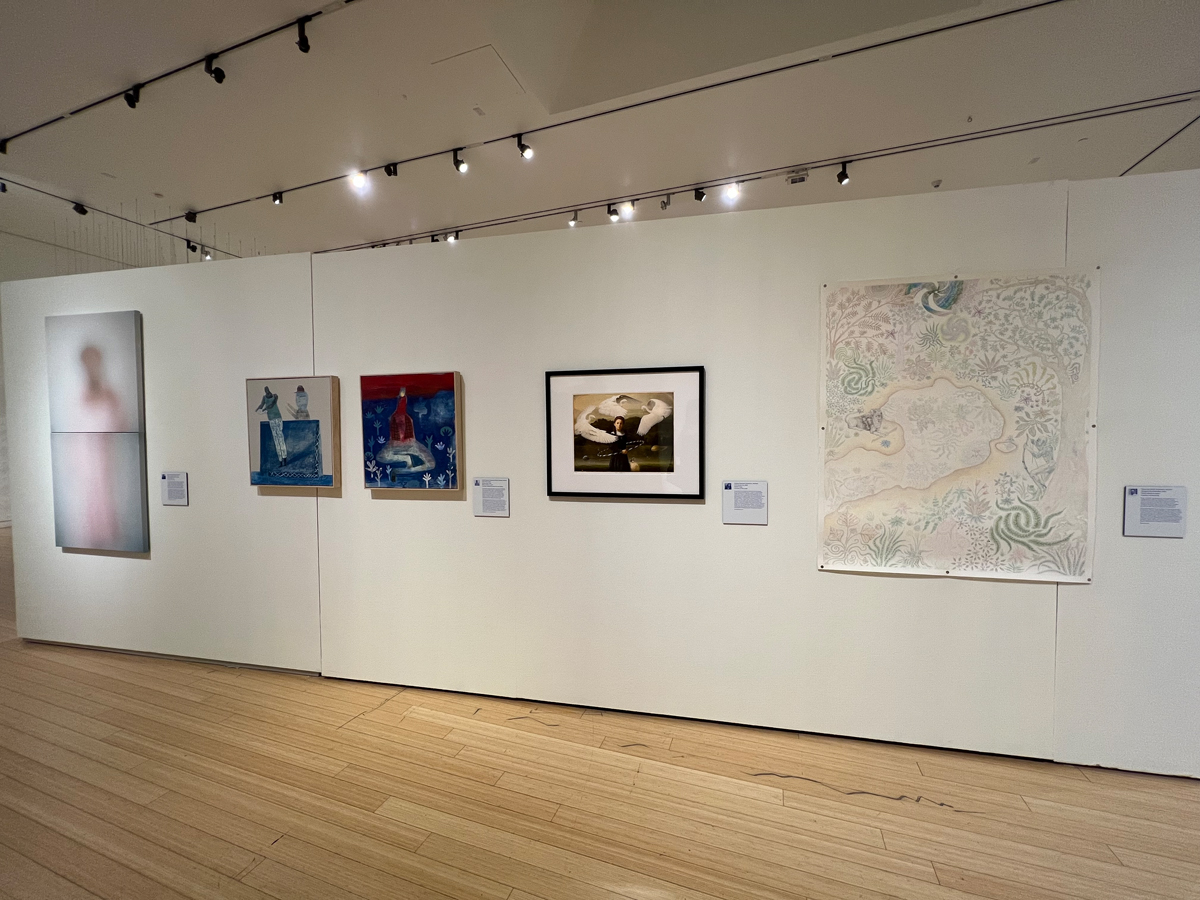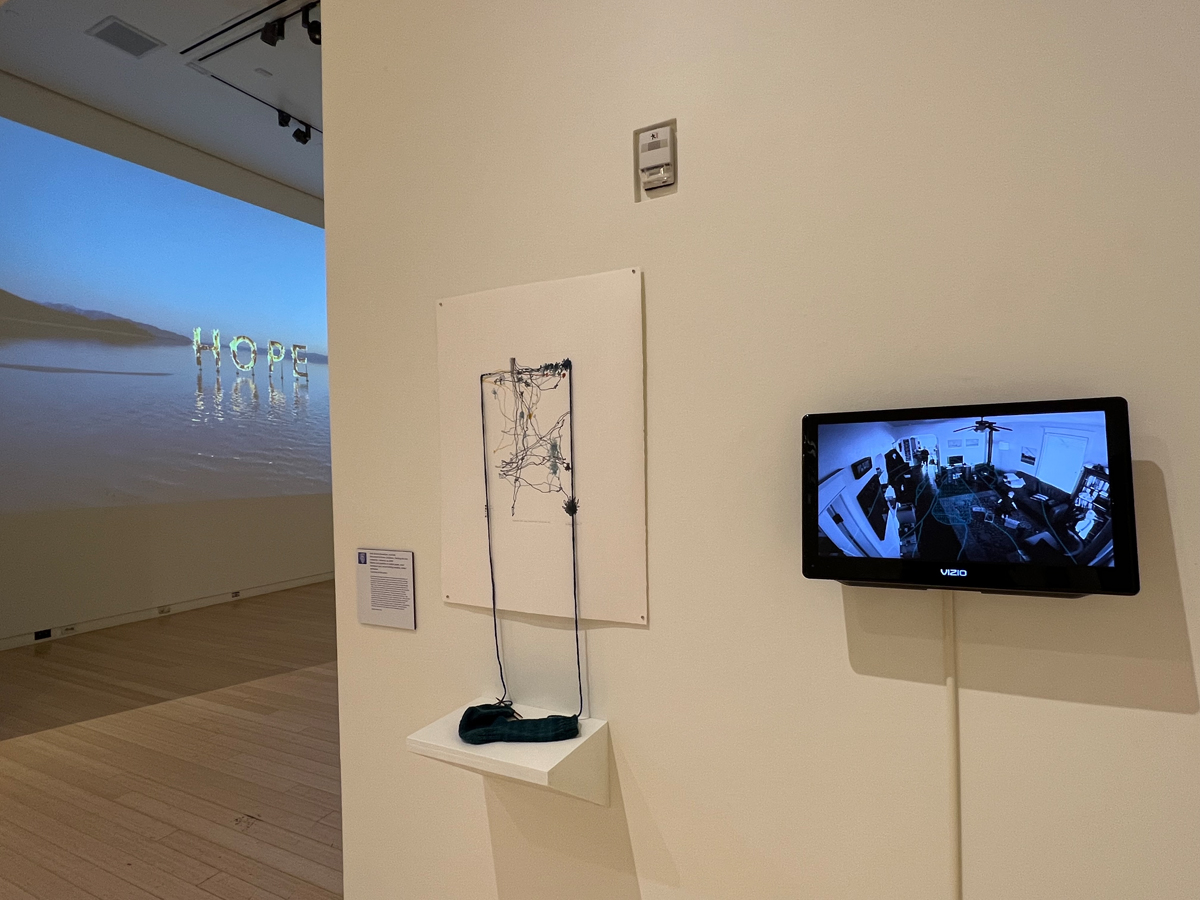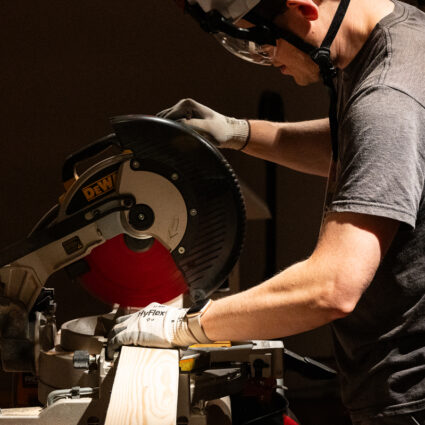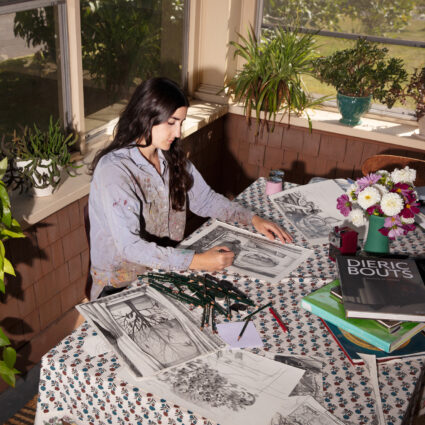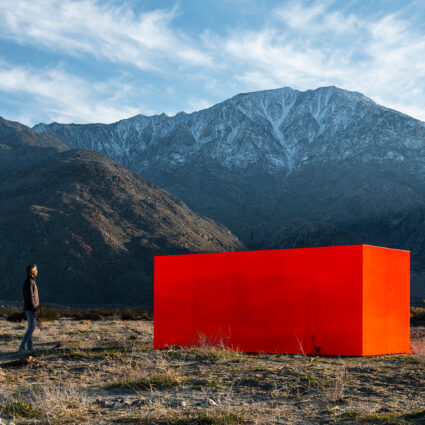New exhibition Materializing Mormonism at Mesa Contemporary Arts Museum has ties to the Center for Latter-day Saint Arts.
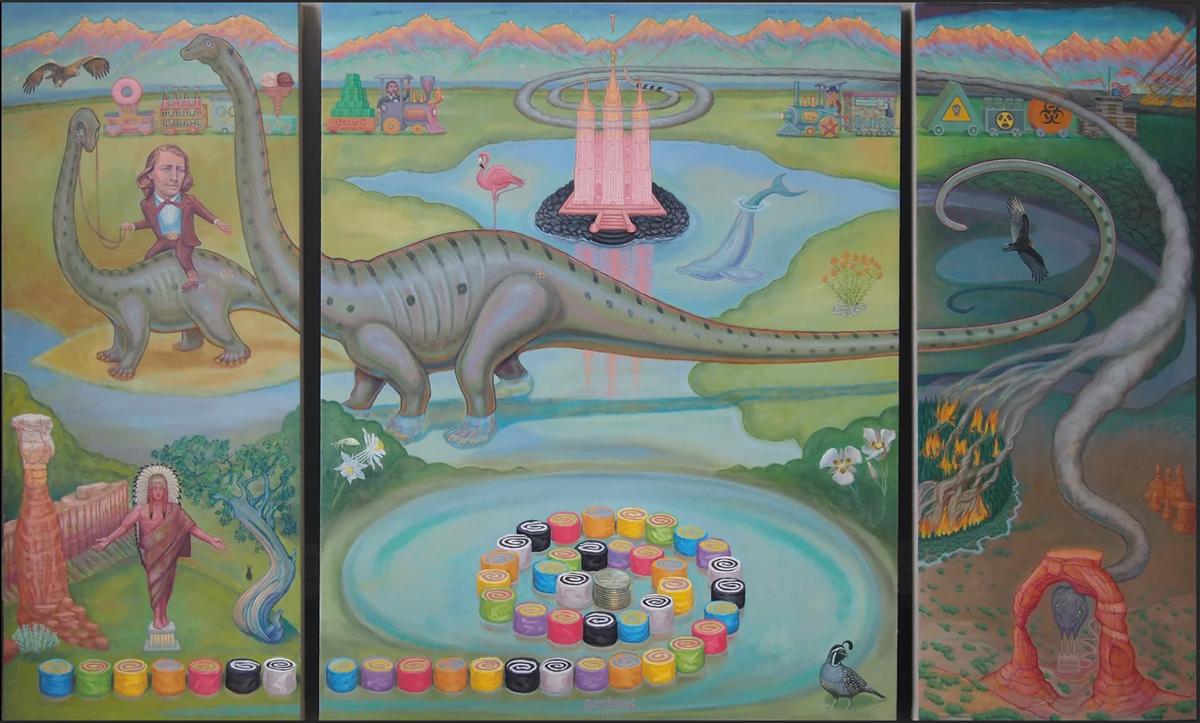
MESA, AZ—Imagine Robert Smithson’s monumental Spiral Jetty (1970) earthwork rendered as a spiral of saltwater taffy or 19th-century Mormon leader Brigham Young seated atop a dinosaur. Both images are part of the satirical iconography in Utah-based artist Kent Christensen’s oil-on-linen triptych Secrets of the Great Salt Lake (2019), which is the first work visitors see before entering the galleries at Mesa Contemporary Arts Museum in Arizona.
The city-operated art space is located at Mesa Arts Center, which anchors the visual and performing arts scene of this city east of Phoenix, where the Mormon community has had a significant historical presence. Mormon pioneers first settled in the Mesa area in 1877, according to the Mesa Historical Museum, and the arts center is located less than a mile from the Mesa Temple for the Church of Jesus Christ of Latter-day Saints, which was dedicated in 1927.
Christensen’s painting is part of Materializing Mormonism: Trajectories in Contemporary Latter-day Saint Art, an exhibition curated by a trio working with the Center for Latter-day Saint Arts in New York. The exhibition is central to the museum’s current season, which is dominated by a narrow swath of religious themes and practices, and fails to include a solo show originally planned for the line-up because an Arizona-based artist—whose great-great-grandfather Lorenzo Snow served as the fifth president of the LDS church—decided not to show her work in this context.
The LDS exhibition, which opened on May 10, 2024, and continues through August 4, includes nearly fifty works created between 2006 and 2024 by more than thirty artists described in publicity materials as “affiliated with and adjacent to the faith.”
Featured works include sculpture, video, drawings, fiber, prints, ceramics, photography, installation art, and more. Over half the artists are based in Utah, and the roster also includes Corinne Geertsen of Mesa, whose digital image Orbit Starter Kit (2023) pictures a young woman encircled by a trio of large white birds.

Materializing Mormonism was organized by Heather Belnap, Ashlee Whitaker Evans, and Brontë Hebdon Patterson. Belnap is a professor of art history and curatorial studies at Brigham Young University in Provo, Utah, where several of these artists earned degrees.
The trio worked “under the leadership of the Center for Latter-day Saint Arts,” according to the introductory wall text for the show. Based in New York City and founded in 2017, the nonprofit was organized to “study, promote and encourage art and artists who identify as or affiliate with” the church “by both faith and culture.” The organization’s mission includes “connecting with a worldwide audience—artistically, intellectually and spiritually,” as noted on its website. It’s funded in part through donations and an endowment established by co-founder and board chairman Richard Bushman, a historian specializing in LDS and early American history.
I grew up hearing the negative comments other Christians, like Evangelicals, would say about them, so why not learn more about them?
Featured artworks are grouped according to five themes, identified in wall didactics as embodiment, places and spaces, community, worldmaking, and “Mormonicana” (a takeoff on Americana). Individual pieces are accompanied by descriptions that reference LDS history, theology, and religious practices. These are familiar topics for members of the LDS church, but studies indicate that Mormons comprise fewer than 15% of Mesa’s current population and just 2% or so of people living in the United States.
Anchoring the season with Materializing Mormonism made sense to Tiffany Fairall, who had a hand in the curatorial process as chief curator for the museum at the time, in part because she views Mormonism as a marginalized Christian faith and LDS members as a segment of the population Mesa serves. “I grew up hearing the negative comments other Christians, like Evangelicals, would say about them, so why not learn more about them? It’s unfortunate not everyone has the same level or reciprocal attitude of tolerance,” she says.
By design, additional exhibitions at MCAM this season focus on themes related to religion and spirituality, according to Fairall, who notes that the museum uses an annual prospectus process to select its offerings. “I saw a religious thread through the season and thought we should highlight the complexity of religious commentary,” Fairall explains.
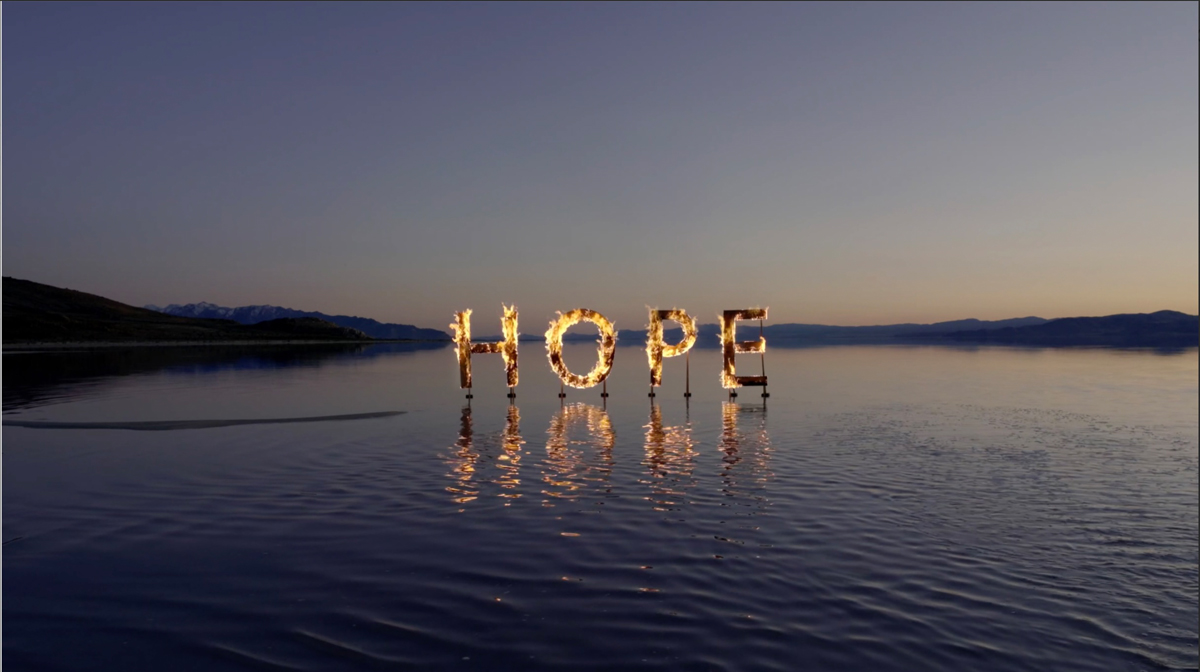
Hence the museum is also spotlighting Mesa-based artists Michael Farmer, who considers the intersections of technology and spirituality, and Emily Christensen McPhie, who seeks to reconcile the everyday with the eternal, as well as Tucson-based artist Jacqueline Chanda, whose depictions of everyday life in Black Appalachia include expressions of faith.
Meanwhile, Phoenix-based artist Angela Ellsworth, whose Mormon heritage deeply informs her creative practice, opted not to move forward with her show slated for a museum gallery called the Project Room this season, where the museum has instead placed Collin Bradford’s A Burning Hope (2021) video installation from the Materializing Mormonism exhibition, in which flaming eight-foot-tall letters spelling “HOPE” are situated in the waters of the Great Salt Lake.
It was a tough decision to withdraw from the exhibition. I was concerned that there would not be enough critical dialogue between my work and the LDS church curated exhibition.
“It was a tough decision to withdraw from the exhibition,” recalls Ellsworth, who recently joined Southwest Contemporary’s editorial advisory board. “I was concerned that there would not be enough critical dialogue between my work and the LDS church-curated exhibition,” Ellsworth shared in a recent email. “I would have been keen for a symposium or a panel discussion on the exhibitions, but that did not seem to be on the table.”
In addition, Ellsworth indicated that “museum staff and curators had a lot on their plate with the former censorship allegations,” referencing art censorship allegations leveled against the City of Mesa in 2023 when officials sought to remove a piece addressing police brutality from an exhibition highlighting three decades of Shepard Fairey’s work. Although there was relatively little public pushback from Mesa residents after the allegations surfaced, the aftermath included two Indigenous artists not showing their work at the museum.
Notably, signage first installed at the museum amid the censorship controversy remains posted outside the gallery housing the Materializing Mormonism exhibition. “To exhibit a work of art is not to endorse the work or the vision, ideas and opinions of the artist,” it reads in part. “No single point of view in any artistic work represents the City of Mesa.”
Update 6/24/2024: Since this writing, the museum has added a new exhibition titled Shimmering Mirage, which features work by artist Anila Quayyum Agha. Southwest Contemporary has confirmed with the City of Mesa that Tiffany Fairall is no longer the chief curator, and the city has posted a job description for a new MCAM curator.
